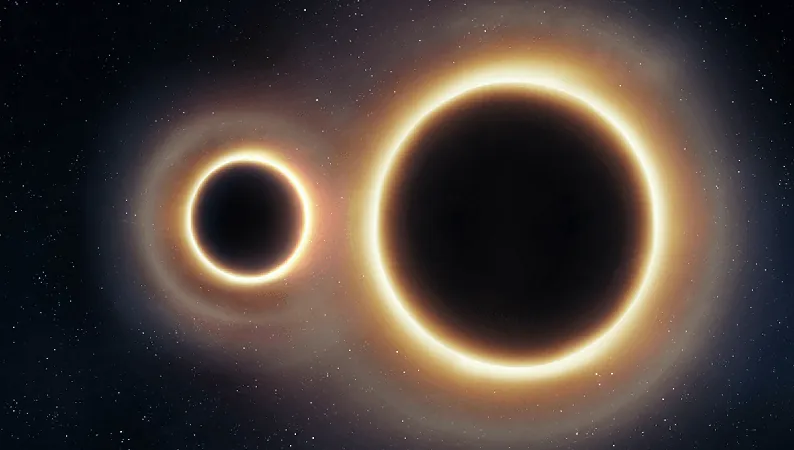
LIGO: Could We Detect Alien Spaceships with Gravitational Waves?
2025-09-03
Author: Charlotte
The LIGO experiment isn't just a marvel of science; it's a groundbreaking venture into the heart of the universe, aimed at detecting elusive gravitational waves (GWs) – ripples in spacetime originally predicted by Einstein over a century ago.
According to Barry C. Barish from the California Institute of Technology, gravitational waves result from massive objects warping the fabric of space-time. When these masses shift, they create distortions that travel through the universe at the speed of light. Imagine the possibilities if we could tune into these cosmic signals!
Understanding how LIGO detects these waves might seem complex, but it’s based on a straightforward concept. LIGO utilizes two lengthy arms, each 4 kilometers long, where light beams bounce between mirrors set at perpendicular angles. Ed Daw, a physicist at the University of Sheffield, clarifies that a passing gravitational wave elongates space in one direction while compressing it in another, causing minute shifts in mirror positions.
These detectors can measure changes as tiny as 1/10,000th the width of a proton. Such precision led LIGO to be the first to confirm the existence of gravitational waves, opening a new chapter in astrophysics.
But what if LIGO's expertise could extend beyond cosmic events to something much more thrilling: potential alien spacecraft? An international team of physicists suggests this audacious possibility, proposing that massive, rapidly accelerating objects—perhaps even advanced technology like alien ships—could generate detectable gravitational waves.
Their research indicates that any significant acceleration of mass results in gravitational waves, opening the door to the possibility of spotting technosignatures from spacecraft. While the concept seems simple, distinguishing these waves from natural cosmic events would be exceedingly challenging.
To put it into perspective, for LIGO to detect such a craft, it would need to be incredibly massive. The calculations indicate that a spacecraft the size of Jupiter, accelerating at around 30% the speed of light, could theoretically be identified from distances ranging between 32,600 to 326,000 light-years! Even a smaller, Moon-sized ship undergoing similar acceleration might be detectable from 3,260 to 32,600 light-years away.
The future looks bright for such explorations. Upcoming detectors like DECIGO and the Big Bang Observer (BBO) could amplify our ability to track these elusive signals by a factor of a million, potentially revolutionizing the search for extraterrestrial life.
Yet, the scientists remind us to stay grounded. Even if we detect unusual signals, they could still arise from natural phenomena. However, the thought that LIGO might uncover evidence of alien spacecraft, even tangentially, adds a thrilling layer to our understanding of the universe.
As we continue to explore the cosmos, who knows what else we might uncover in our quest for knowledge? The potential for discovery is limitless!









 Brasil (PT)
Brasil (PT)
 Canada (EN)
Canada (EN)
 Chile (ES)
Chile (ES)
 Česko (CS)
Česko (CS)
 대한민국 (KO)
대한민국 (KO)
 España (ES)
España (ES)
 France (FR)
France (FR)
 Hong Kong (EN)
Hong Kong (EN)
 Italia (IT)
Italia (IT)
 日本 (JA)
日本 (JA)
 Magyarország (HU)
Magyarország (HU)
 Norge (NO)
Norge (NO)
 Polska (PL)
Polska (PL)
 Schweiz (DE)
Schweiz (DE)
 Singapore (EN)
Singapore (EN)
 Sverige (SV)
Sverige (SV)
 Suomi (FI)
Suomi (FI)
 Türkiye (TR)
Türkiye (TR)
 الإمارات العربية المتحدة (AR)
الإمارات العربية المتحدة (AR)